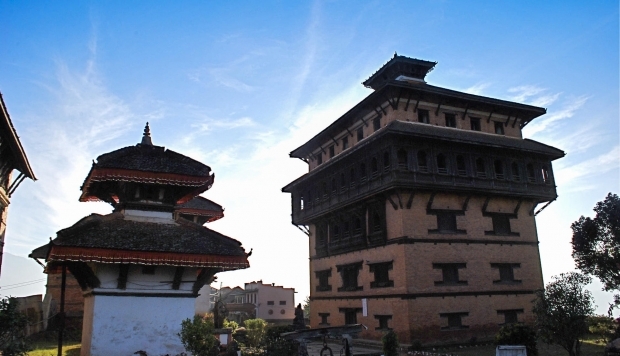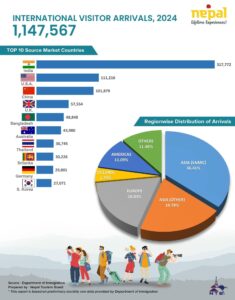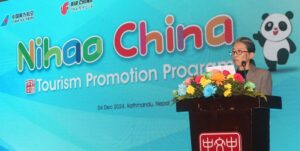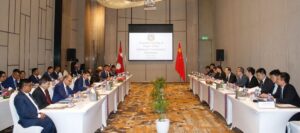Nuwakot, an authentic taste of rural Nepal without the tourist herds

Nuwakot is the ideal destination for those hankering after an authentic taste of rural Nepal without the tourist hordes, writes Bibek Bhandari
Nepalese sunrises are part of many a tourist itinerary. The popular hilltops of Pokhara and Nagarkot, just outside Kathmandu, are often crammed with early-morning sun seekers.
Nuwakot is different; the dawn breaks in silence above Malika Hill, the shades in the sky changing from reds to oranges as if someone were adjusting the contrast in photo editing software, while mountains are seemingly afloat in a thick blanket of cloud. The snow-capped Himalayas form a fitting backdrop.
Formerly a royal base, Nuwakot village – which gives its name to the wider district – about 75 kilometres north of Kathmandu along a serpentine highway, is far from Nepal’s tourism hotspots and chronicles the country’s past.
It was in Nuwakot that Prithvi Narayan Shah, the king who unified Nepal, began devising his strategy to conquer Kathmandu, in 1744. Having captured the now metropolis in 1768, he moved his capital from the hill town of Gorkha and founded the Shah dynasty, which would rule the country for 240 years, until 2008, when the monarchy was abolished and Nepal transformed into a republic.
The monarchy’s legacy, and those of earlier dynasties, can be seen in the monumental squares of the Kathmandu Valley and fortresses such as the Nuwakot Durbar – the seven-storey palace that is the area’s piece de resistance.
It was in the palace garden that the king delivered the legendary Dibya Upadesh, his guiding principles of governance. The temples of Hindu gods Vishnu and Narayan stand side by side in the courtyard in front of the Garad Ghar, formerly an armoury, and the Ranga Mahal, which housed the king’s entertainment hall.
In the grand durbar, steep wooden stairs pass the queen’s dressing room, Prithvi Narayan Shah’s bedroom and a dark prison on the sixth floor. The seventh offers a bird’s-eye view of Nuwakot village and the surrounding hills. The palace rooms are empty except for the king’s bed, his safe and some wooden artefacts but a gradual ascent offers an overview of architectural designs from yesteryear – from walls that are six-and-a-half-feet thick to gigantic wooden beams and artfully crafted windows and doors.
“Unfortunately, a lot of people don’t care to come inside and know about the place’s history,” says Govinda Baniya, a palace employee.
From the fifth floor, Baniya points to Kalika Hill, from where the Shah king took Nuwakot on his third attempt.
There is a viewing tower atop Kalika, which is close to Malika Hill. The surrounding terraced hills are sprinkled with villages of small mud houses, the residents of which greet hikers with a smile, taking a moment to welcome new faces.
Nuwakot, a village of 2,000 inhabitants, surrounds the palace in sleepy clusters known as tole (pronounced “toll”). Brahma Tole consists mainly of old houses, and a few cement ones, outside of which women dry millet and elderly men chat in the balmy winter sun. English journalist Perceval Landon, in his 1928 book Nepal, draws similarities between the settlement and the township of Kirtipur, on the outskirts of the capital, which is built in what British ethnologist Brian Houghton Hodgson calls “the Chinese style of Kathmandu”: adjoining mud and brick houses with roofs made of terracotta tiles.
At the end of Brahma Tole Lane, which begins at the palace’s southern gate, is the picturesque 500-year-old Bhairavi Temple, a two-storey pagoda. During Sindoor Jatra, an annual festival dedicated to the goddess Bhairavi and held during April’s full moon, the entire town is covered in vermillion powder.
Close to the palace’s northern gate are the Taleju and Akash Bhairav temples. The former opens twice a year for ritual animal sacrifices. A stone replica of Akash Bhairav is attached to the outside of the deity’s temple, in Indra Chowk, a quiet courtyard surrounded by old houses from which a stone-paved lane lined with small shops leads back to the palace. The damaged original wooden effigy is displayed in the palace.
The 20-minute walk from Indra Chowk is along a narrow, slippery trail, which Baniya refers to as the “route to Tibet”. It passes through the remains of an 18th-century gunpowder factory that, he says, was abandoned when Prithvi Narayan Shah’s royal base was moved to Kathmandu.
Also along the trail are Teen Dhaare (“three spouts”) and Okhati Paani (“spout with medicinal water”), which are still used as sources of drinking water. Artistically sculpted stone water spouts connected to an underground water source can be found throughout Nepal. Locals believe that the water from Okhati Paani, which is secluded and surrounded by trees, contains natural minerals and healing powers and, Baniya says, people use the water in addition to medicine.
I sip some, hoping to rejuvenate myself as we head to our hotel with the sun sinking on the horizon.
There is some home-stay accommodation in the area but The Famous Farm is the only hotel. It’s an almost 100-year-old mud house that boasts a few city comforts. With a stunning view of the rolling hills and the royal palace from its wooden balconies, a hot shower and fusion cuisine – think chickpeas and potatoes cooked with Nepali spices served with mayonnaise and mustard dressing salad, cheese, Tibetan fried bread and boiled organic carrots and beans; and classic daal-bhaat, comprising rice, lentil soup, vegetables and tomato chutney – this place has been called “an eco-luxury hotel”.
The hotel’s manager says international visitors to Nuwakot are few and far between in comparison with Bandipur and Gorkha, which lie along the highway that connects Kathmandu to popular cities such as Pokhara and Chitwan.
Landon also writes that Nuwakot was prosperous and had been of greater importance before he arrived here. Nepali anthropologist and conservationist Harka Gurung, in his 1980 travelogue Vignettes of Nepal, writes, “[Nuwakot] was on a way of becoming a forgotten place. This historic place had already an air of abandonment and renunciation.”
But Nuwakot hasn’t been entirely forgotten. Lonely Planet refers to it as “one of Nepal’s undiscovered gems”.
(Courtesy : Scmp.com Jan 11 , 2015 )














